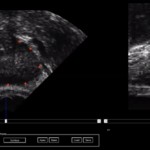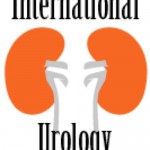To treat or not to treat: is the way forward clearer in low-risk prostate cancer?
Sir,
I read with interest the above “Comment” by Dr Gnanapragasam in the August issue of the Journal [1]. While I applaud his efforts at suggesting improvements to the criteria by which a decision is made to manage a patient with prostate cancer on an active surveillance program I feel he distracts from the clear, simple and important message of the PIVOT trial [2]. That message is that if, using the D’Amico criteria [3], a patient is classified as being in a low risk prostate cancer group then prostate-cancer mortality will not be significantly lower if that patient has a radical prostatectomy compared to that patient being on an active surveillance program. The D’Amico criteria may need updating or improvement but that does not change the basic and clinically important message of the PIVOT trial.
Derek J Byrne MD FRCSI
Consultant Urological Surgeon, NHS Tayside
derekbyrne12@aol.com
References
- Gnanapragasam VJ. To treat or not to treat: is the way forward clearer in low-risk prostate cancer. BJUI 2013; 112: 285-287.
- Wilt TJ, Brawer MK, Jones KM et al. Prostate Cancer Intervention versus Observation Trial (PIVOT) Study Group. Radical prostatectomy versus observation for localized prostate cancer. N Engl J Med 2012; 367: 203-13.
- D’Amico AV, Whittingham R, Malkowicz SB et al. Biochemical outcome after radical prostatectomy, external beam radiotherapy, or interstitial radiation therapy for clinically localized prostate cancer. JAMA 1998; 280: 969-74.



I thank the author for his letter on this comment. It is unclear however as to how the commentary detracts from the PIVOT trial as has been suggested. The commentary touches on the PIVOT trial as one of a number of strands of evidence on low risk prostate cancer management by active surveillance. Presumably the author is supporting the notion that radical prostatectomy is not suitable for low risk cancer as the mortality rates are no different from observation only. This is exactly the message that the commentary has taken away from the trial plus that other radical and focal therapies are also unlikely to be beneficial. However the relapse rates and mortality from either therapy in PIVOT was not zero. In this context there are questions to be asked on whether risk was correctly attributed in the first instance as a contributory factor. Moreover even in the PIVOT trial the format, management and execution of observation/active surveillance was not well documented. The main bulk of the commentary argues therefore that there should be national debate, research and consensus on active surveillance for clinicians and especially for patients. It is in fact gratifying to see that this has now started from a number of bodies including BAUS and NICE.
Vincent Gnanapragasam